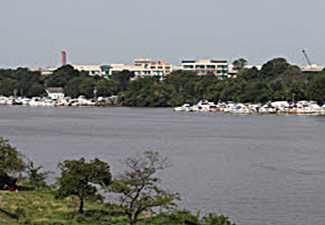Urban Waters and the Anacostia Watershed (Washington, DC/Maryland)

Video: Off to the Races: Restoring America's Urban Waterways (YouTube)
Video: Anacostia Park Meaningful Engagement Cohort (YouTube)
Video: East Capitol Urban Farm (YouTube)
The Anacostia River watershed in the District of Columbia and Maryland is home to more than 800,000 people, 43 species of fish and some 200 species of birds. The watershed has been heavily urbanized over time, losing 6,500 acres of wetlands and 70% of its forest cover. Impervious surfaces now cover more than 25% of the watershed. Near the U.S. Capitol, the Anacostia River flows next to communities that suffer some of the region’s lowest employment rates, highest poverty rates, poorest health indicators and other challenges.
Ecologically, the Anacostia River is steadily improving. The watershed has historically suffered from trash, toxins, sewage, runoff, oil, heavy metals and more due to adjacent agricultural, industrial and urban land uses, but government agencies and community partners have led major restoration efforts that could soon make the Anacostia swimmable and fishable once again. At the same time, however, inequality in DC region has grown, and some residents fear displacement caused by gentrification as the river improves.
The river and its parks hold enormous potential to not only provide abundant wildlife habitat and improve water quality, but also to play a role in equitable community development and public health. The Anacostia Watershed UWP is a “partnership of partnerships,” helping to connect community partners and government agencies that work to address these overlapping issues.
The UWP meets twice per year to check on progress and identify new projects for Federal collaboration.
Do you have a watershed restoration project that could use Federal agency support? Please contact the Anacostia Ambassador.
